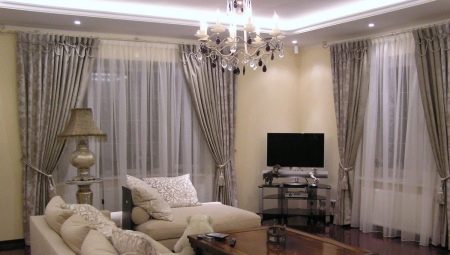The hall in each apartment is the central room in which family meetings and conversations with friends take place. The interior of this room speaks of the financial well-being of the family and the design abilities of the hostess of the house, who is trying to make the maximum amount of effort to equip the living room. When decorating this room, special attention should be paid to window openings, which are its most significant object. Many designers use only tulle in their projects, but the combination of tulle and blackout curtains looks especially impressive and elegant.

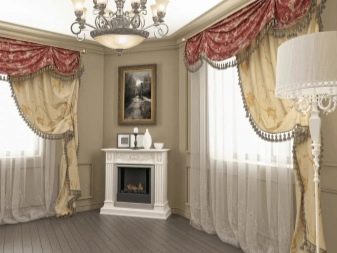
Kinds
Tulle and curtains for the hall are important decor items, the general style of the room depends on the choice of which.
Curtains play a key role in this set, and tulle acts as a general background for them.
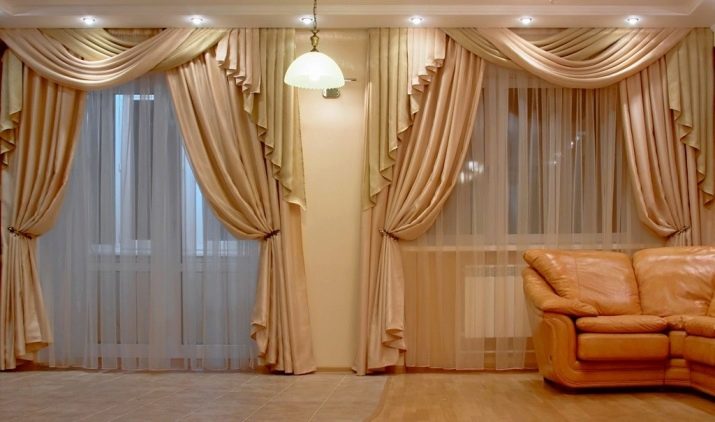
To decorate the hall, designers recommend paying attention to the following types of curtains.
- With lambrequin. A product with horizontal drapery, which is located on top of the curtains on the front side. Despite the external beauty of the lambrequin, it has no functional value and is only a subject of decor.


- On grommet rings. Curtains that have special hinges or bushings. These elements are fixed to the canvas at the same level through special holes, and subsequently the rod will pass through them.
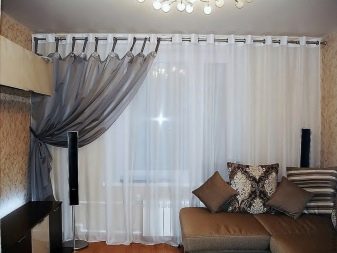
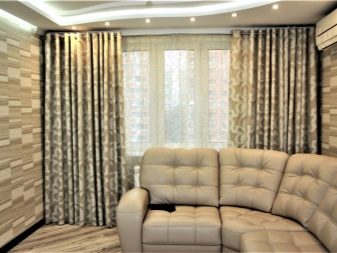
- Short. A popular type of curtains, the length of which is at the level of the windowsill. For the living room, it is better to choose light shades, and for the working area near the window, dark tones are more suitable.
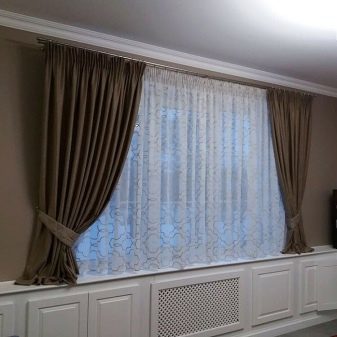
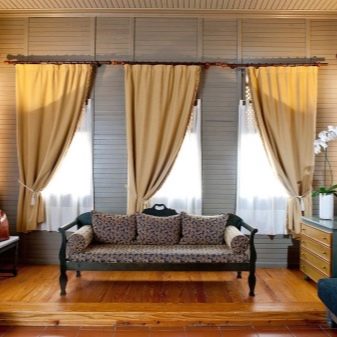
- Curtains. A classic curtain that is located across the entire width of the window.This decor item is made of light, airy fabrics. Curtains can close the window in full or in part.
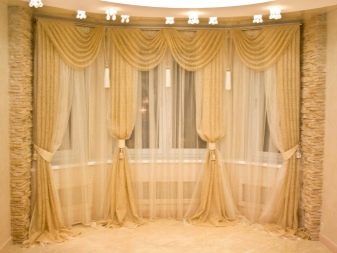
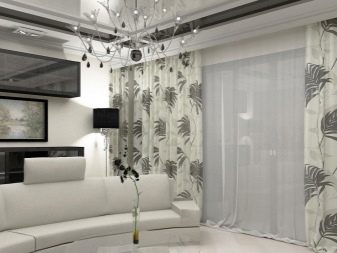
- Rolshtora. Roller blinds that are wound on a special shaft. Advantages - compactness, maximum proximity to the window, ease of operation, the presence of a remote or manual control system.
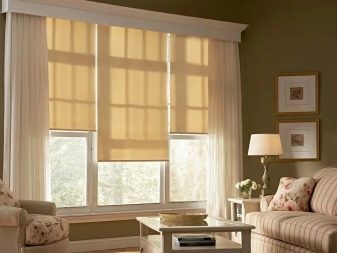
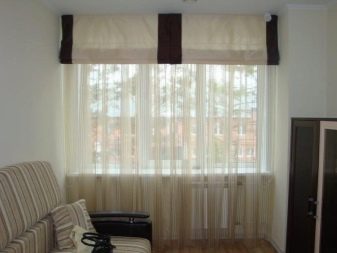
- Plisse. Curtains, the appearance of which resembles classic blinds. A special production technology allows you to move the textile fabric in different directions. The disadvantage is the high price range, the inability to do it yourself.
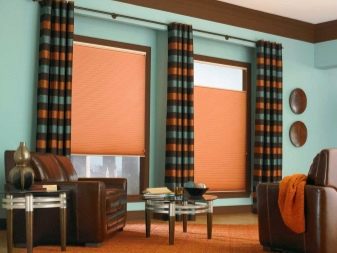
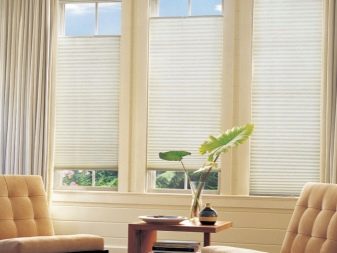
- Wooden. Curtains made of bamboo. Elements of this design can be connected by a filament method or a weaving method.
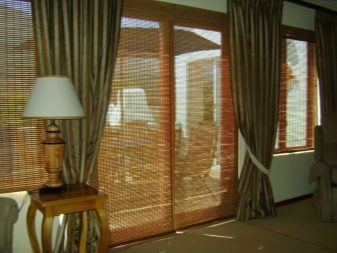
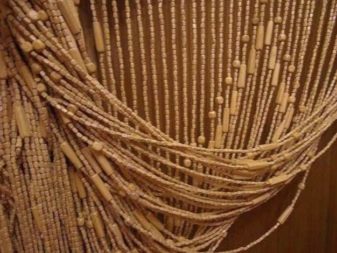
- Roman. A simple analogue roller blind and pleated.
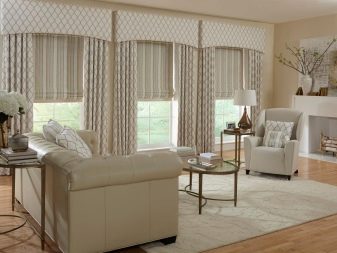
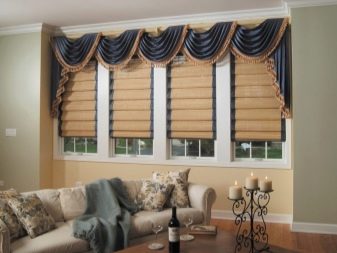
The choice of the type of curtains directly depends on the style of the room.
Take a look at the most popular living room design styles.
- Classic - a style that requires products of a straight cut or with light folds. To shape the curtains, designers recommend using garters and laces, as well as lambrequins. This direction allows the use of one-sided, two-sided, single and multi-layer curtains.
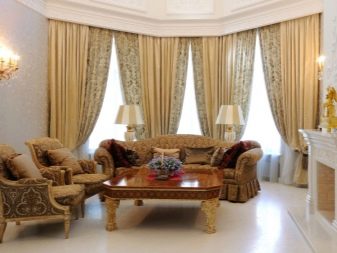
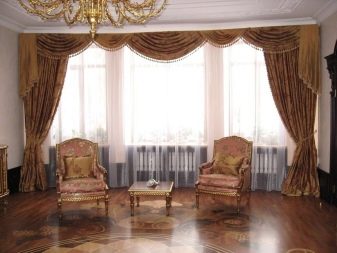
- Modern - A direction that involves the use of light curtains in a calm color scheme. This direction allows the use of exotic and ethnic textiles.
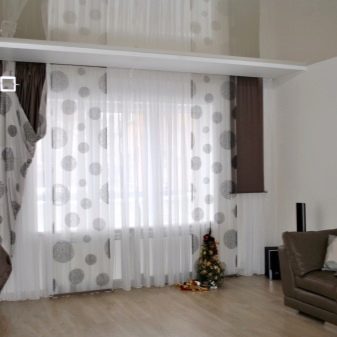
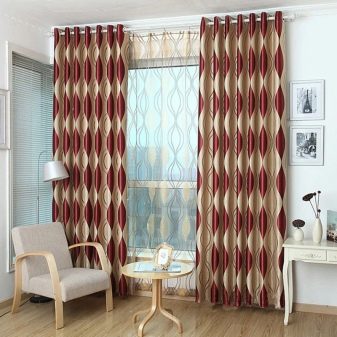
- Modern - a style for the creation of which lightweight asymmetric canvases are used. The most common patterns are geometric shapes, broken lines, fabulous animals and plants. Designers allow the simultaneous use of several drawings on the same canvas.
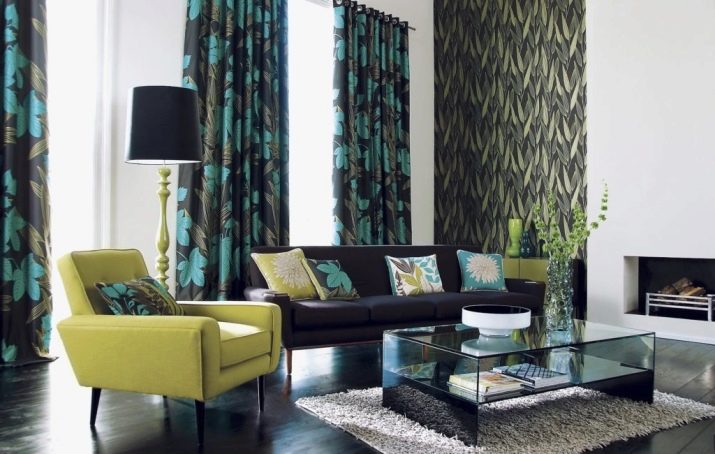
- Minimalistic - direction, all accessories in which are aimed at giving the room lightness and airiness. For the most accurate recreation of this trend, stylists recommend using Japanese panels and Roman curtains in white, gray and brown.
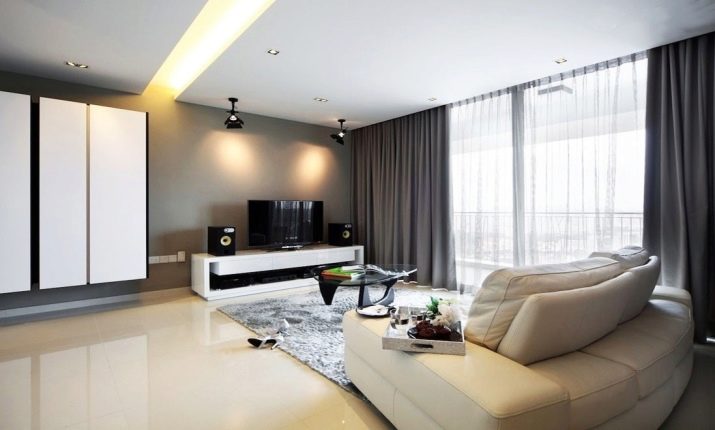
- Provence - French country, for the reproduction of which stylists use simple elements of decor. All curtains should be made only of natural and environmentally friendly materials.

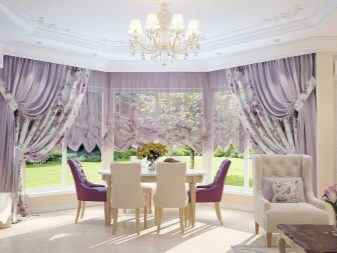
- High tech - a style in which there should be no patterns and graphic images. Clear and straight lines are a distinctive feature of this style. Synthetic curtains, the color of which resembles metallic shades, will help emphasize this area.
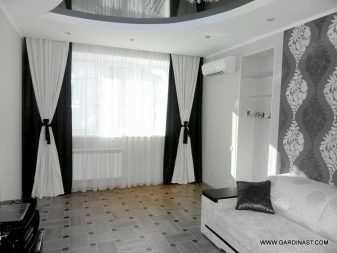
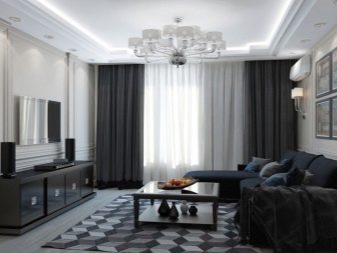
- Austrian - A popular direction, which involves the use of a rectangular canvas collected in scallops. The number of assemblies depends on the design idea.
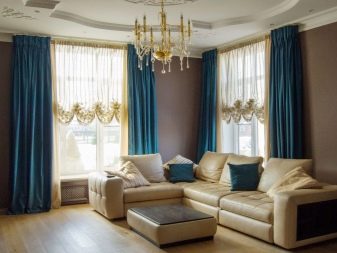
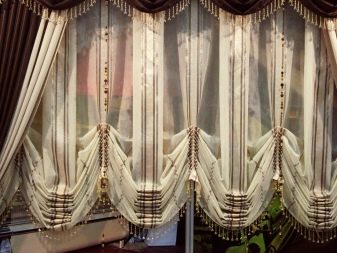
- Japanese - The style in which Japanese panels are applied. The classic panel should completely cover the entire window area and move away if necessary. To create a completely flat surface, manufacturers use special weighting agents.

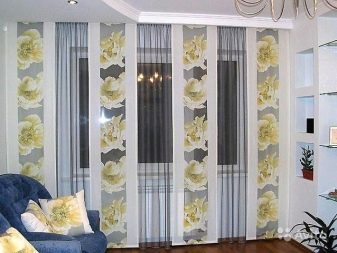
In addition to a wide variety of types and designs for decorating the hall, the textile on the windows carries the following functional load:
- protects the room from bright sunlight;
- closes the interior from street view;
- creates an air gap;
- supports the general stylistic direction.

How to choose by type of fabric?
In order for the purchased kit to last a long period of time, it is necessary to be especially careful when choosing a fabric.
For example, the classic style involves the use of silk, taffeta, brocade and linen, and minimalism harmoniously looks with organza, moire and with all natural fabrics.
For windows that are in direct sunlight, it is better to choose fully synthetic or mixed materials. Artificial fibers are less prone to burnout and destruction under the influence of ultraviolet radiation. All thick and heavy materials are best combined with light and air curtains.
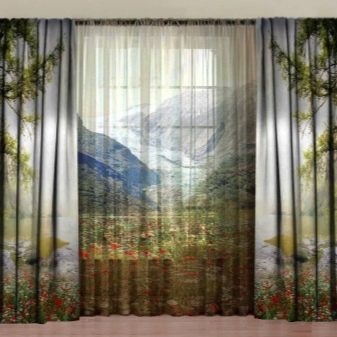
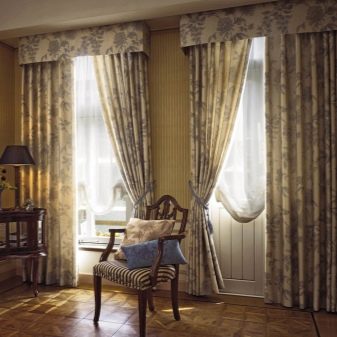
The most common types of fabrics for curtains in the living room are presented below.
- Blackout - double fabric that has a satin weave. Advantages - reliable protection from light, sound and cold, resistance to ultraviolet radiation, ease of care, preservation of the original shape after washing, high density, nice texture, the ability to drape and create any shape, long service life, hypoallergenicity. Disadvantages - high price range, synthetic base material.
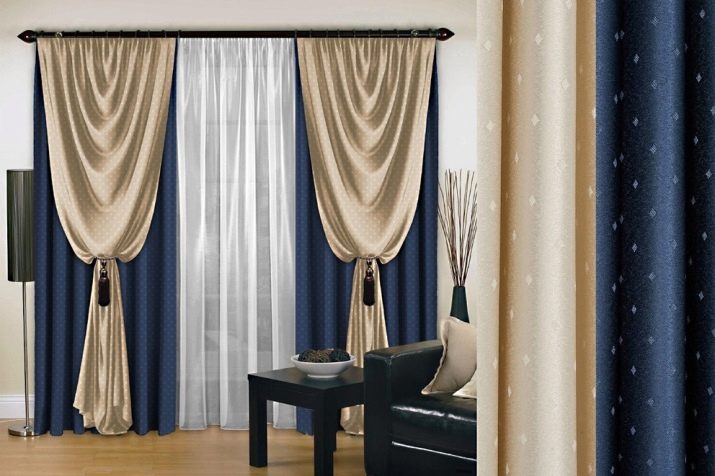
- Gunny - a material that has a rough texture, and its checkerboard weave resembles burlap. Manufacturers produce canvases with both a smooth surface and fleecy. The basis of the material consists not only of natural fibers (linen, wool, silk, cotton), but also of synthetic ones (polyester, acrylic). Advantages - durability, affordable price range, resistance to mechanical damage, shape retention and the absence of wrinkles after washing, hypoallergenicity, easy care, unusual original texture. Disadvantages - shedding of cropped edges and their mandatory processing, the appearance of puffs.
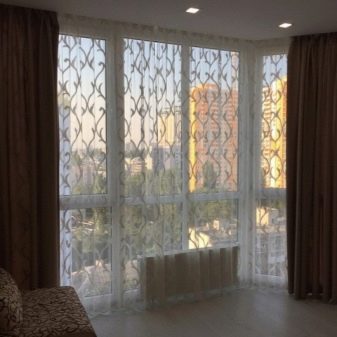
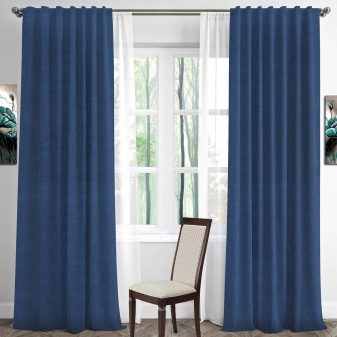
- Gabardine - a natural material that is made from wool of sheep, silk or cotton. A distinctive feature is the diagonal weaving of the threads. Advantages - a high level of strength, durability, the absence of wrinkles after washing, the ability to create beautiful drapery, ease of care, reliable protection from light, water-repellent effect. Disadvantages - difficulty sewing and shedding edges.

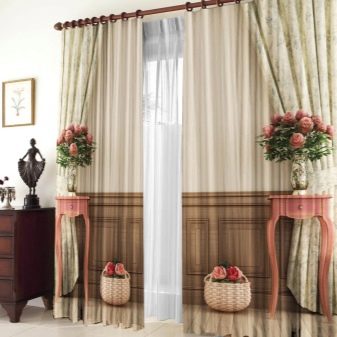
- Linen - natural material that has absolute environmental safety. This material is effectively combined with velvet and silk. Advantages - high strength and durability, lack of artificial impurities, hypoallergenicity, interesting texture. Disadvantages - a high percentage of shrinkage, the difficulty of ironing dried material, the demand for care.
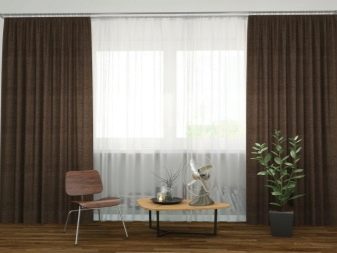
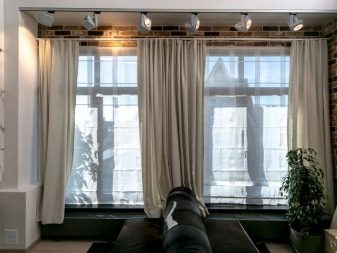
- Velvet - A beautiful material that has a thick and short pile. Advantages - a spectacular and expensive appearance, reliable protection against light and street noise, the creation of a reliable barrier against cold air flows, resistance to fading. Disadvantages - a large mass, reduced space in small rooms.
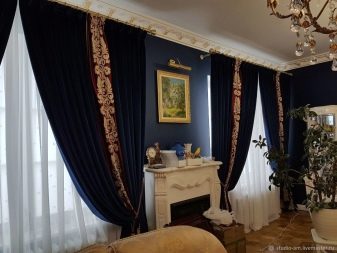
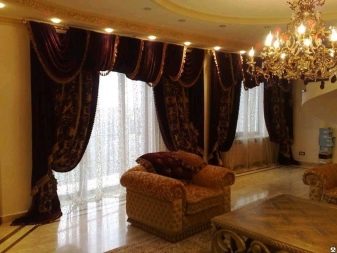
- Jacquard - a material with a complex system of weaving yarns, as well as with various patterns and small details. This fabric consists of both synthetic and natural threads. Advantages - ease of care, sun protection, the ability to use in different interiors. The disadvantage is the inability to use in small rooms.
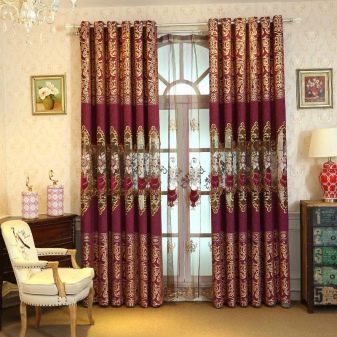
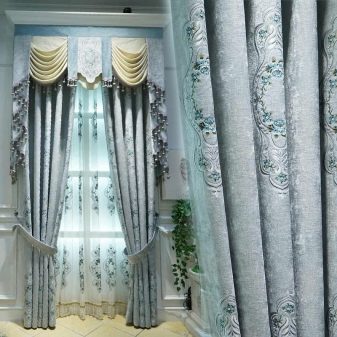
- Kisei. Universal type of curtains, which consists of a large number of thin and long threads. This fabric can be used to decorate the room in any style. Depending on the shade, beautiful threads can play the role of both tulle and curtains.
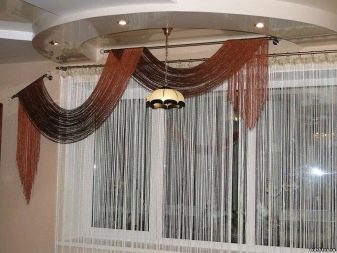
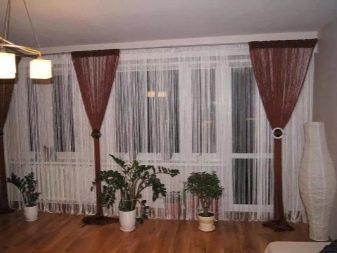
When choosing tulle for the living room, you should pay attention to the following materials.
- Veil - durable material that has a dense structure. Advantages - resistance to pollution, the ability to make different types of drapery, nice and soft texture, wide color gamut.
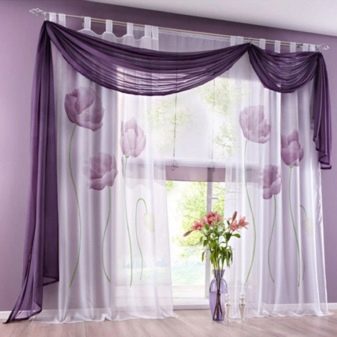

- Organza - the fabric made of polyester has airiness and light transmission. The disadvantage is an obstacle to the circulation of air currents.
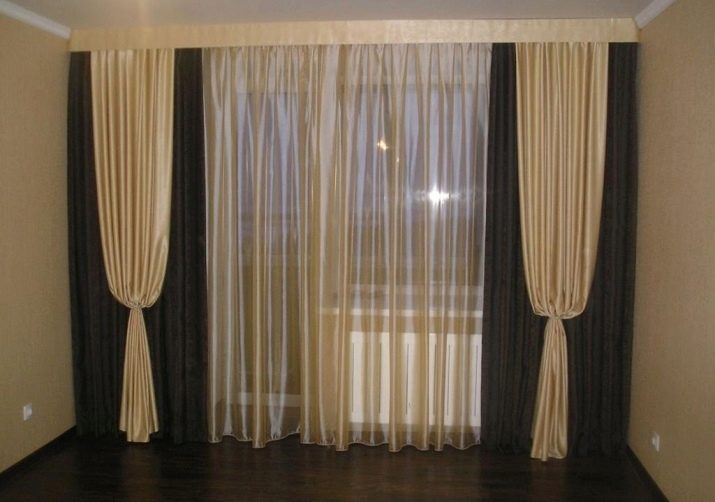
- Grid - a synthetic material that has an unusual texture. Disadvantages - high pollution rate and provoking allergies.
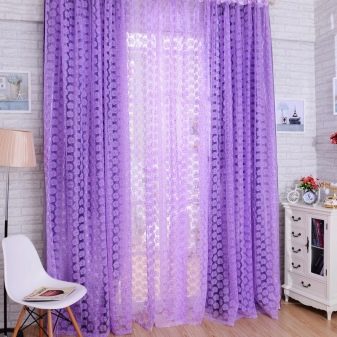
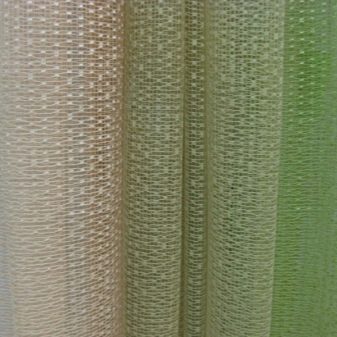
- Batiste - a synthetic fabric in which the threads are closely adjacent to each other. The disadvantage is the lack of protection from light.
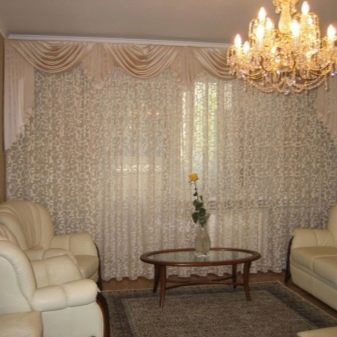
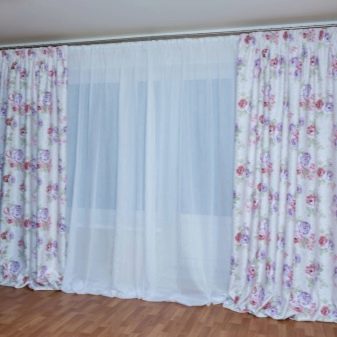
- Chiffon - expensive material with a textured surface. The disadvantage is the difficulty of tailoring and short life.
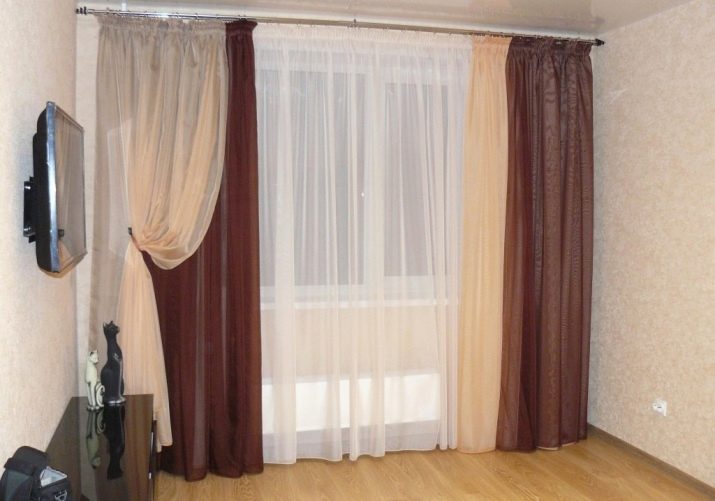
Novelties in the field of interior decoration are two-layer, night and tulle curtains, as well as ready-made sets, which consist of ready-made curtains and tulle. The size range of all elements is close to standard and is universal for most rooms.
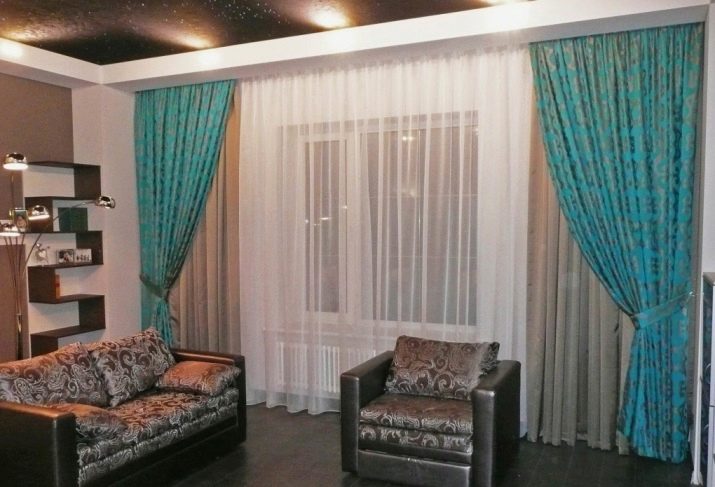
How to choose the color?
In order to ensure that the selected textiles do not stand out from the general stylistic trend and emphasize it favorably, the color scheme of curtains for the hall should overlap with the basic shades of the room. To add air and space to a small room, it is better to use light shades of textile, but dark tones will create a twilight and give the living room coziness.
Warm shades (yellow, orange) will add light to the dark space, but the cold colors (gray, blue, purple) will fill the room with pleasant coolness and freshness. A special lightness and elegance is given to the curtains by intertwined threads of silver and gold.
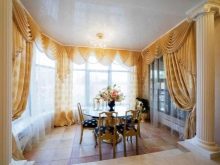
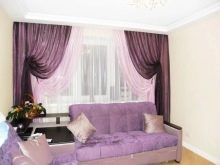
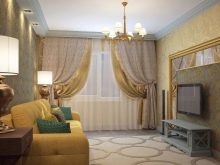
Universal colors that suit any style:
- beige;
- peach;
- cream.
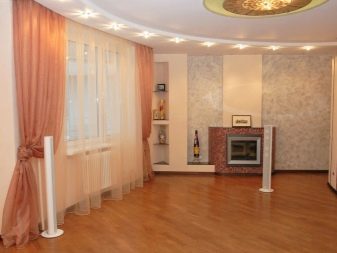
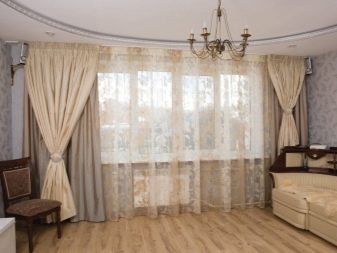
Looks spectacular and elegant a combination of bright colors of decor items with warm and delicate shades of curtains. Some designers use rich colors of curtains, which will become the central composition of the room with a warm, delicate and cozy decor.
It is not recommended to select curtains for wallpaper. It is better if the curtains have a common range with furniture and other interior items.
Decorative napkins, small pillows, and also furniture covers made of the same material as curtains will help to support the chosen color scheme.
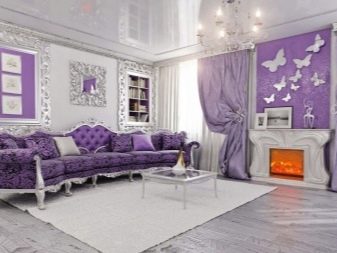
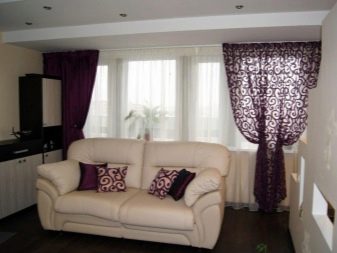
To create maximum comfort and coziness, it is necessary to pay attention to the color scheme of not only the curtains, but also the tulle, the shades of which must necessarily overlap with the basic colors of the curtains.
Designers highlight the following most popular tulle tones.
- White - A classic, sought-after and festive shade that harmoniously blends with a different palette of curtains. The curtains look especially gentle with beige and cream colors.
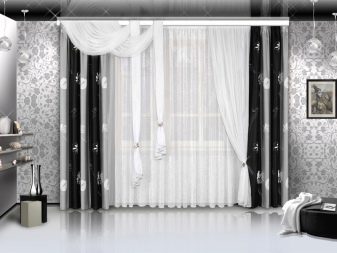
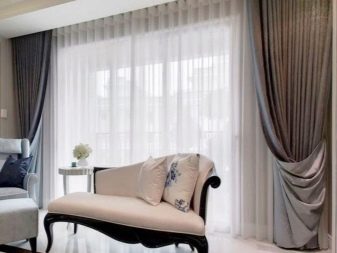
- Yellow - An energetic and cheerful tone that goes well with blue, green and white. Some designers harmoniously combine yellow and gray tones.

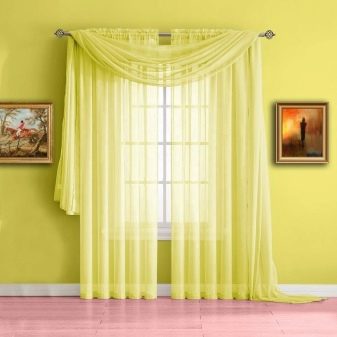
- Green - a self-contained shade that carries a hint of peace and tranquility.
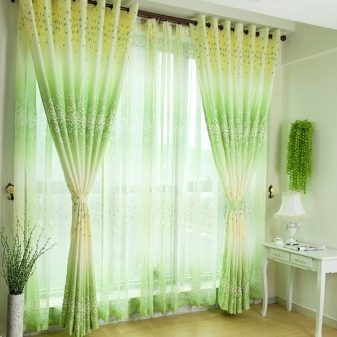
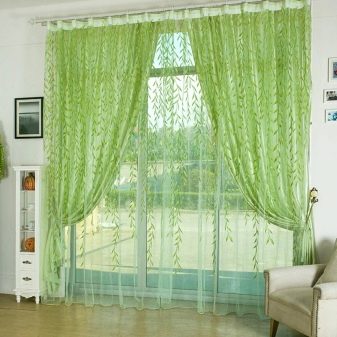
- Turquoise - a shade that is often used for interior decoration in the Mediterranean style and in the Provence style.
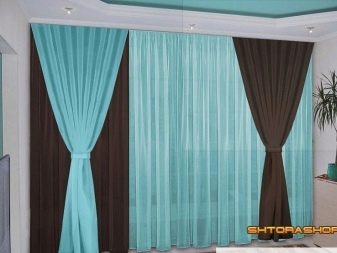
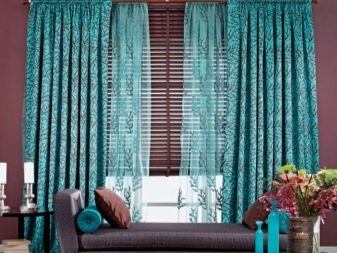
- Blue - a soft and gentle tone that creates a feeling of coolness and comfortable temperature in the room in the summer.
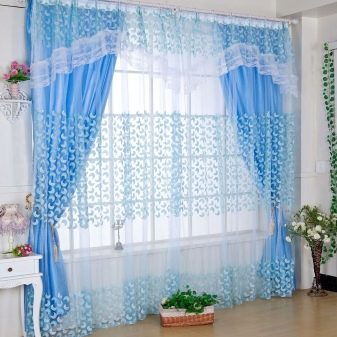

- Red - aggressive color, which is not suitable for all rooms. If the design is dominated by this color palette, then it is better to give preference to burgundy and purple tones.
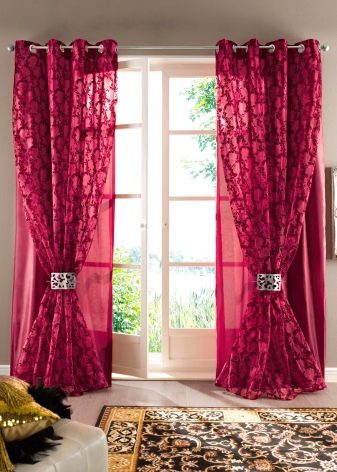
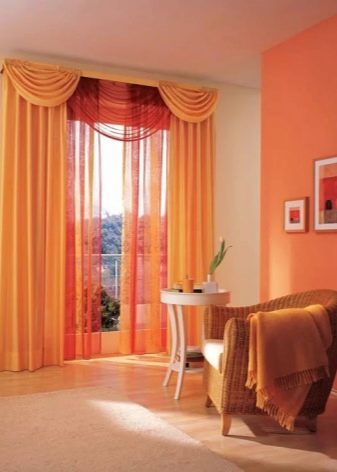
- Orange - a joyful shade that will look spectacular with curtains of the same color scheme.
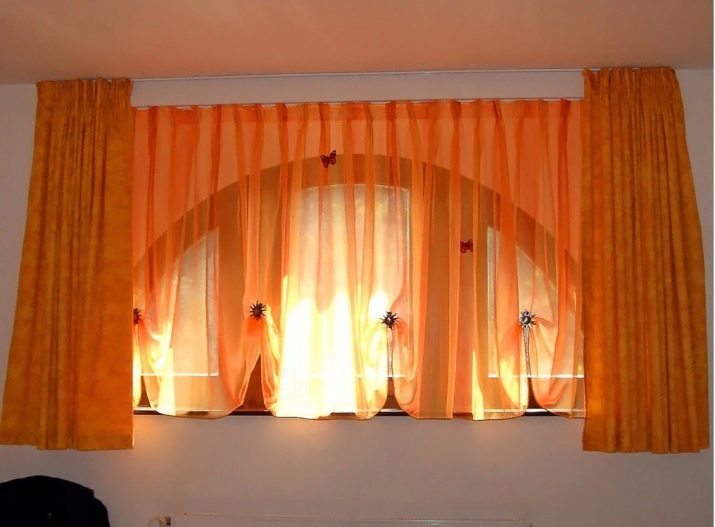
We combine drawings
The color and material of the canvas plays a huge role in choosing curtains, but we should not forget about the patterns and graphic images on which the overall design of the room depends.
Characteristics of the main graphic images:
- vertical lines - adding height to the room;
- horizontal - visual increase in area.
When you design small rooms, you need to abandon large images and massive lambrequins, which visually reduce space and lower the ceiling area.
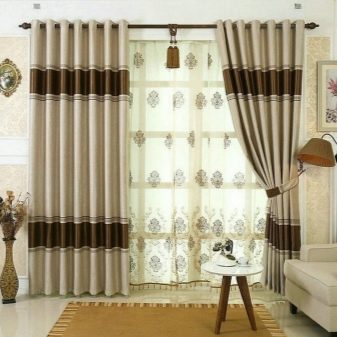
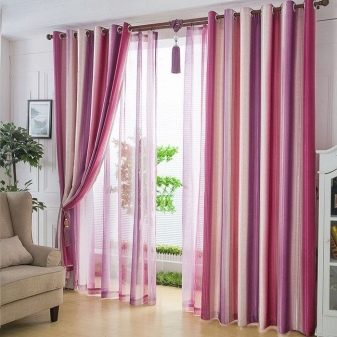
The room will add romance, sophistication and aristocracy to the decor of lace, wicker patterns and guipure inserts. These accessories should be present only on curtains or tulle - excessive decoration of all textiles in the room is a sign of poor taste.
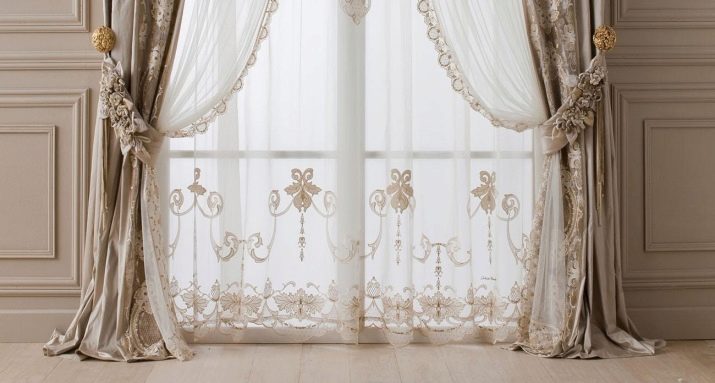
How to hang?
In order for the acquired curtains and tulle to have a spectacular appearance and decorate the room, it is necessary to hang them correctly.
In this option, it is necessary to choose multi-row cornices. Professional designers recommend paying attention to ceiling moldings.
Tulle and curtains can be attached to a baguette using ribbons, plastic hooks, fabric loops and eyelets.If there is a lambrequin in the textile kit for the window, then it is mounted on top of the entire structure using a special adhesive tape.

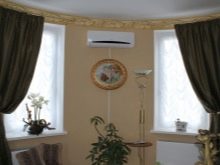
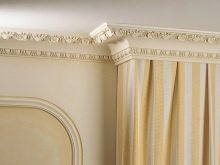
During the fastening of textiles, one should not forget about drapery, which can be performed in the following ways:
- one sided - identical folds directed in one direction;
- towards each other - creating the effect of triangular drapery;
- bow - a change in the direction of the triangular fold.
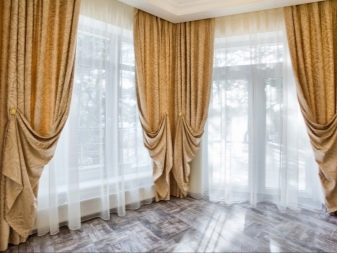
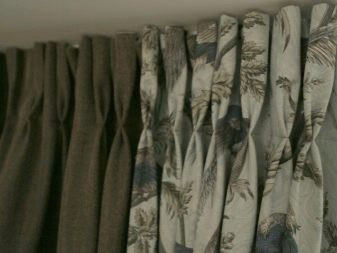
Beautiful ideas
In order for the living room to be decorated with beautiful curtains, it is not necessary to independently come up with their design, just use the ready-made ideas of specialists.
Turquoise straight curtains and white tulle with a pattern will give the room coziness and fill it with pleasant coolness in the summer.
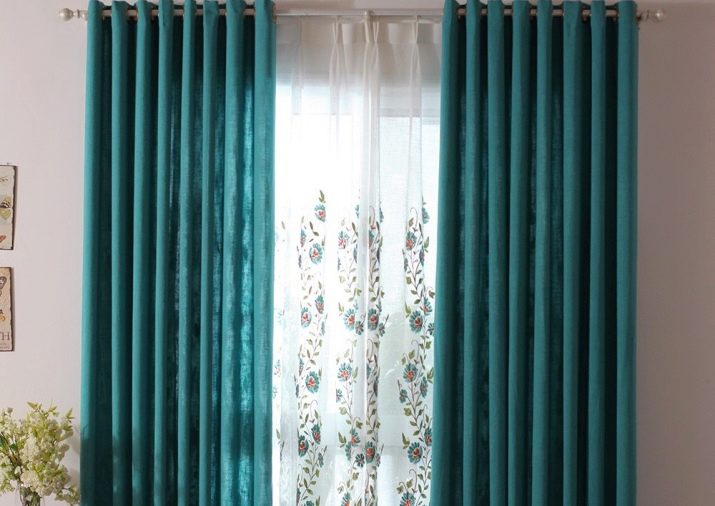
Dark curtains to match the furniture against the backdrop of a snow-white tulle - a sign of aristocracy and wealth.
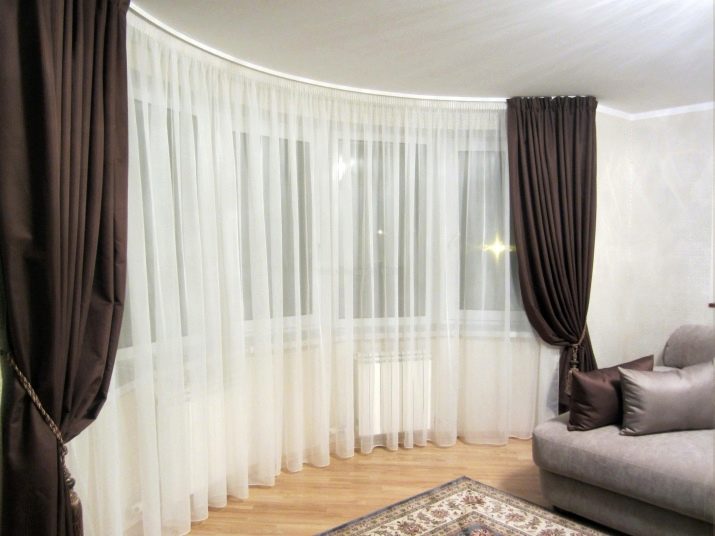
The location of the tulle on top of the curtains is a new direction in design, which allows you to maximize highlight the pattern on the tulle.
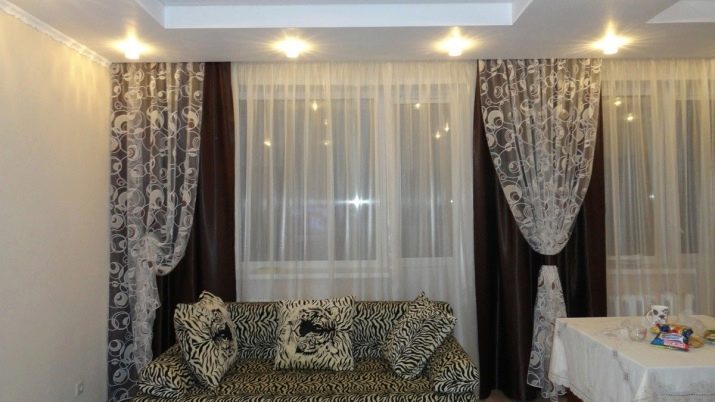
Windows decorated with white tulle and two-tone curtains look not only stylish, but also spectacular.
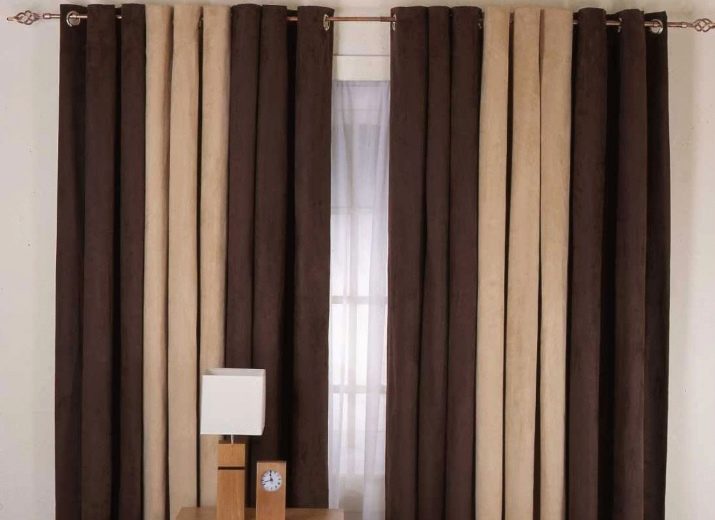
Next, watch a video with expert advice on how to choose the right tulle for the curtains.
